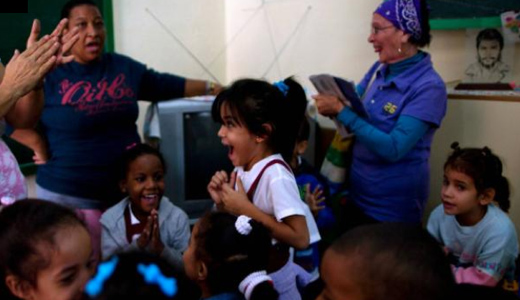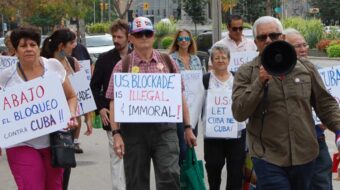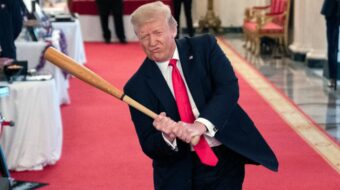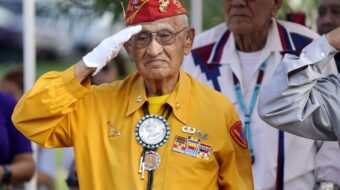
The dramatic Dec. 17 joint announcement by Cuban President Raul Castro and U.S. President Barack Obama on the normalization of relations between the two countries has already borne fruit: The last three members of the Cuban Five are free and home with their families, U.S. contractor Alan Gross is also back with his family in the United States; a Cuban who was doing a 25-year jail sentence for carrying out U.S. espionage on the island is also free, and prisoners that the United States asked to be freed have been or are in the process of being freed.
But this is only the start, and the U.S. blockade of Cuba -called a “blockade” and not merely an embargo by the Cubans because it is used to prevent other countries from trading with Cuba– is a long way from being lifted. President Obama urged the Congress in his State of the Union Message last Tuesday to do just that.
Meanwhile, talks between the United States and Cuba on the topic of migration began Jan. 21 in Havana. These are routine talks that had been scheduled before the Dec. 17 announcement, but Cuba does have a larger agenda on the migration issue.
The Cubans want to resolve the issue of the “Cuban Adjustment Act,” which allows virtually all Cuban, and only Cuban, migrants to become permanent residents of the U.S. a year and a day after coming here, and especially the “wet foot/dry foot” policy according to which rafters who reach U.S. soil are automatically allowed to stay here, but those who are stopped at sea by the U.S. Coast Guard are turned back. The Cuban authorities complain that this policy encourages people to take risky trips in unseaworthy craft in the hope that they can get ashore and be given almost automatic legal residency in the United States.
Cuba wants migrants to be channeled through normal emigration procedures, for which the cooperation of the United States would be needed.
Another grievance that Cuba has is the Cuban Medical Professionals Parole Program whereby Cuban medical personnel serving in overseas solidarity missions are induced to defect to the United States. Cuba provides free medical education for all its doctors, nurses and other medical personnel, and is also very proud of its role as a provider of medical aid to dozens of countries, many of them very poor and suffering from a drastic lack of their own medical human resources.
This Cuban medical solidarity has been going on for many years, but the world’s attention was drawn to it last year when Cuba provided a record number of doctors and nurses to help fight the Ebola epidemic in the West African countries of Liberia, Sierra Leone and Guinea. The salaries of Cuban health care workers are nowhere near those of their colleagues in the United States, for the simple reason that Cuba is much poorer.
Cuba’s per-capital gross domestic product, calculated by the PPP (Purchasing Power Parity) method is about $10,000 per year, while in the United States it is about $53,000. Despite being much poorer and not being able to pay its doctors s well as U.S. doctors are paid, on a number of health measures, including infant mortality, Cuba does better than the United States.
Initial reports are that the United States is not budging on these two issues; nor will the Cubans relent.
The U.S. delegation, headed by Assistant Secretary of State for Western Hemisphere Affairs Roberta Jacobson, will stay in Havana to begin further negotiations toward the implementation of the changes President Obama has proposed, including the opening of a U.S. embassy in Havana and a Cuban embassy in Washington D.C. Currently the affairs of the two countries are handled by “Interests Sections” that deal with routine matters such as visas, but are not able to perform other tasks normally carried out by full -fledged embassies.
This should not be too difficult on the face of it: The buildings already exist and are furnished and staffed and all that should be needed is to change the titles of the functionaries and the signs on the gates. However, the anti-Cuba lobby in Congress is threatening to somehow block the creation of the U.S. Embassy in Havana through legislation whose nature is not yet clear.
Congressional opponents of the rapprochement with Cuba threaten to raise the issue of compensation for properties nationalized by the Cuban government after the January 1, 1959 Revolution. These include former possessions not only of people who were U.S. citizens at the time, but of Cuban citizens who subsequently came to the United States and were naturalized here. At the time Cuba offered all foreign owners of nationalized property compensation in the form of bonds, and every other country accepted this-but the United States government, bent on overthrowing the Cuban government, did not. In the interim, the unrelenting U.S. sabotage campaign against the Cuban economy, which has included violent sabotage operations that Cubans say have cost more than 3,000 Cuban lives and billions in economic losses, has created a large demand for payment from the Cuban side.
Nevertheless, the issue of compensation for nationalized property is central to the most heavy-duty legislative component of the blockade, the 1996 Helms-Burton Act.
To undo that act will involve a terrific struggle.
Photo: Students and teachers celebrate after listening to a live, nationally broadcast speech by Cuba’s President Raul Castro about the country’s restoration of relations with the United States, at a school in Havana. | Ramon Espinosa/AP











